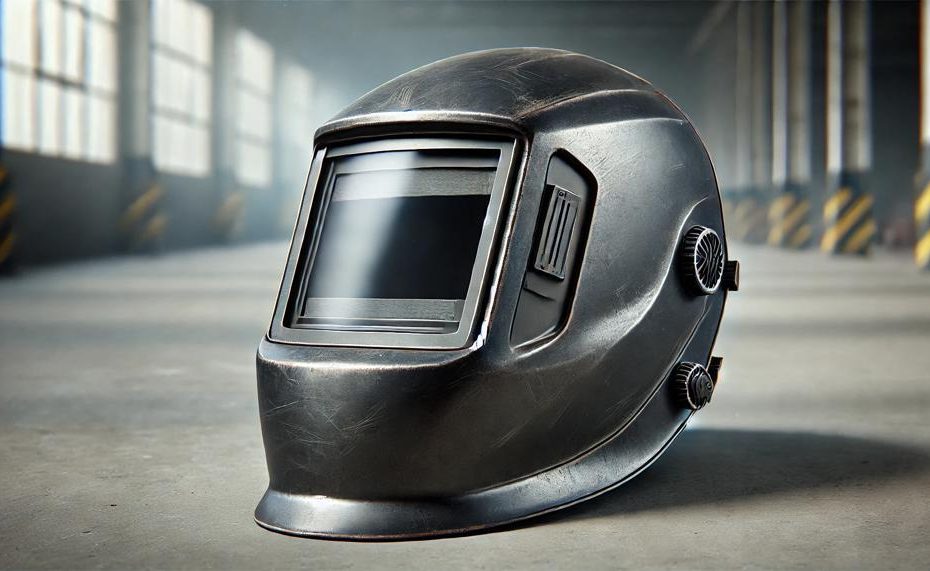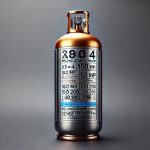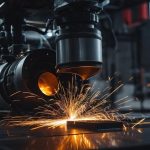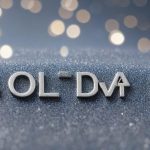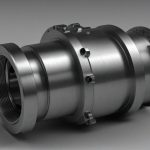Eclipses, those mesmerizing celestial events, have captured human curiosity for centuries. As we stand in awe of these natural phenomena, safety becomes a paramount concern, especially when it comes to observing them directly.
The quest for the ideal viewing method brings us to an unconventional candidate: the welding helmet. But how effective and safe is this piece of industrial gear for eclipse watching?
In this post, we’ll delve into the nuances of using welding helmets as a gateway to the cosmos during an eclipse, ensuring you’re equipped with the knowledge to experience these events safely and memorably.
Here’s what you’ll discover:
- The Science Behind the Shield: Understand how welding helmets are designed to protect your eyes and whether they offer sufficient protection against the intense light of an eclipse.
- Safety Standards and Specifications: Not all helmets are created equal. Learn about the specific criteria your welding helmet must meet to be deemed safe for eclipse viewing.
- Alternatives and Precautions: We’ll explore other safe methods to enjoy eclipses, offering you a spectrum of options to choose from, alongside essential safety tips.
Join us as we navigate the intersection of industrial safety and astronomical wonder, ensuring your next eclipse experience is both awe-inspiring and eye-safe.
Contents
- 1 Can You See Through a Welding Helmet?
- 2 Factors to Consider When Using a Welding Helmet for Solar Eclipse Viewing
- 3 Lens Shade, Age, and Quality of the Welding Helmet
- 4 Are There Better Options Available for Solar Eclipse Viewing?
- 5 The Benefits of Eclipse Glasses or Specialized Solar Filters
- 6 How to Use Eclipse Glasses or Specialized Solar Filters Properly
- 7 Tips for Protecting Your Eyes During a Solar Eclipse
- 8 Conclusion
Can You See Through a Welding Helmet?
A welding helmet can act as a guard for your eyes during an eclipse, but it’s crucial to select one with the correct specifications. Here’s how a welding helmet does its job:
- UV Radiation Blockage: Welding helmets are crafted to shield your eyes from harmful ultraviolet (UV) rays. This is essential during an eclipse when the eyes might be exposed to intense UV radiation.
- Shade Level Importance: For the protection to be effective during an eclipse, the welding helmet must have a shade level of at least 1This ensures that the amount of visible light reaching the eyes is sufficiently reduced, safeguarding them against the bright light of the sun.
- Secure Fit: A properly fitting helmet is vital. It prevents any direct sunlight from sneaking past the edges of the helmet and harming your eyes. A snug fit keeps you safe from indirect exposure.
Despite these protective features, welding helmets may not offer complete safety for viewing an eclipse. This is because they are primarily designed to filter out UV and IR radiation typical of welding operations, not necessarily the full spectrum of light emitted during an eclipse. Here are some additional safety tips and considerations:
| Consideration | Detail | Advice |
| Protection Level | Shade level 14 or higher | Ensure your helmet meets this criterion |
| Fit and Coverage | Must fit securely, covering all angles | Adjust the helmet for a tight, secure fit |
| Alternative Protection | Specialized solar filters or eclipse glasses | Prefer these for optimal safety and clarity |
| Maintenance | Regularly check helmet condition | Ensure lens and auto-darkening feature work correctly |
Factors to Consider When Using a Welding Helmet for Solar Eclipse Viewing
When planning to use a welding helmet for viewing a solar eclipse safely, here are the crucial elements you must consider:
Shade Level:
Ensure the welding helmet has a shade level of at least 12, though a level of 14 is recommended for the best protection against the intense light of the sun.
Fit and Comfort:
A snug, comfortable fit is key to preventing any slivers of light from sneaking in and harming your eyes.
UV and IR Protection:
The helmet should offer comprehensive protection against ultraviolet (UV) and infrared (IR) radiation to safeguard your eyes from these harmful rays.
Viewing Quality:
Opt for helmets with auto-darkening filters (ADF) that adjust the shade automatically for a clearer, more precise view without having to remove the helmet.
Standards and Certification:
Check that the welding helmet meets international safety standards for eye protection, ensuring it’s certified for the purpose.
Additional Safety Gear:
Even with a high-quality welding helmet, consider using additional protective equipment like solar filters or eclipse glasses for extra safety.
Maintenance and Inspection:
Regularly inspect and maintain your welding helmet to ensure it offers optimal protection; damaged filters or lenses can compromise safety.
Adhering to these guidelines will ensure that your experience of the solar eclipse is not only awe-inspiring but also safe. It’s all about enjoying the celestial show without putting your eyes at risk. Make sure your welding helmet is up to the task, and don’t shy away from doubling up on protection if needed.
Lens Shade, Age, and Quality of the Welding Helmet
Welding helmets are crucial for eye protection during various activities, including observing an eclipse. The lens shade, age, and quality of a welding helmet significantly impact its safety and effectiveness. Below, we delve into each of these aspects:
Lens Shade: The Guardian of Your Vision
The lens shade determines how much light and radiation can pass through the helmet to your eyes. For eclipse viewing, a shade of at least 12 is recommended to safeguard your eyes from harmful solar radiation.
- Darker Shades for Intense Light: During an eclipse, the sun’s rays can be particularly harmful. A helmet with an appropriate shade level attenuates intense light, allowing for safe observation.
Age: A Testament to Reliability
As welding helmets age, their materials can degrade, potentially compromising protection.
- Material Fatigue: The protective qualities of the lens can diminish over time due to exposure to sunlight, heat, and wear. Regular checks and timely replacements ensure consistent protection.
Quality: The Backbone of Safety
Quality encompasses the materials, construction, and features of a helmet, including UV/IR protection and auto-darkening filters.
- High Standards for High Safety: Helmets adhering to international safety standards offer reliable protection. Look for certifications that guarantee the helmet’s capability to shield against harmful radiation.
In essence, selecting a welding helmet with the appropriate lens shade, ensuring it is in good condition, and opting for a high-quality model are essential steps to enjoy the spectacle of an eclipse safely.
Are There Better Options Available for Solar Eclipse Viewing?
To safely marvel at a solar eclipse without resorting to a welding helmet, there’s a buffet of better-suited options that not only protect your peepers but also enhance your viewing experience. Here’s the lowdown:
| Method | Description | Benefits |
| Solar Viewing Glasses | Specialized glasses meeting ISO 12312–2 standards, designed to filter out harmful sunlight. | Portable, inexpensive, and specifically made for solar observation. |
| Telescope with Solar Filter | A telescope equipped with a solar filter on the objective lens for direct viewing. | Allows detailed views of the sunspots and solar surface. |
| Pinhole Projector | A simple DIY method using a pinhole in a card to project the sun’s image onto a surface. | Safe, educational, and a fun project to do with kids. |
| Projection with Binoculars or Telescope | Projecting the Sun’s image through binoculars or a telescope onto a screen. | Enables group viewing and can be done with common equipment. |
| Live Streams | Watching the eclipse through online broadcasts. | Safe, accessible from anywhere, and often includes expert commentary. |
Remember, the thrill of observing a solar eclipse should never come at the cost of your sight. Ditch the regular sunglasses, camera filters, or any makeshift contraptions that promise the moon but deliver a gamble. Stick to the tried and true, and the eclipse will be nothing short of unforgettable.
The Benefits of Eclipse Glasses or Specialized Solar Filters
Eclipse glasses and specialized solar filters safeguard your eyes during a solar eclipse by meticulously filtering out the sun’s detrimental rays. These protective gears are engineered with precision to block virtually all of the harmful ultraviolet (UV) and infrared (IR) light, alongside the blindingly intense visible light.
This meticulous filtration is crucial for preventing irreversible damage to the eyes’ delicate components, such as the retina and cornea. Let’s delve into the specifics of how these devices offer protection.
| Feature | Eclipse Glasses | Specialized Solar Filters |
| Material | Black polymer or paper frames with “SolarView” coated lenses | Black polymer in various forms (sheets, film, handheld viewers) |
| UV and IR Filtration | Blocks 99.9% of harmful UV and IR rays | Designed to block out harmful UV and IR rays |
| Safety Standard | Must meet ISO 12312-2 | Must meet ISO 12312-2 |
| Light Reduction | Reduces light intensity to safe levels | Reduces light intensity to safe levels |
| Usage | Direct viewing of solar eclipse | Direct viewing or attachment to cameras/telescopes for photography |
These devices operate on a simple yet effective principle: by significantly reducing the sun’s brightness, they ensure that the only light reaching your eyes is at a safe, non-damaging level. It’s akin to turning down the volume on a blaring speaker—except, in this case, it’s the potentially eye-damaging solar light that’s being dialled down to a whisper. This is crucial because the intense light of the sun during an eclipse can lead to solar retinopathy, a condition where the retina is damaged from direct sunlight exposure.
What sets these specialized tools apart is their adherence to the ISO 12312-2 safety standard, a testament to their reliability in protecting your peepers. It’s vital to steer clear of substitutes like regular welding helmets, which, despite being designed to shield eyes from the glare of welding, don’t cut the mustard when it comes to the astronomical levels of light emitted during a solar eclipse.
In essence, donning a pair of eclipse glasses or using specialized solar filters is akin to equipping your eyes with a shield, safeguarding them from the sun’s fierce blaze.
How to Use Eclipse Glasses or Specialized Solar Filters Properly
To safely use a welding helmet for viewing an eclipse, ensure it adheres to the essential guidelines for eye protection and viewing clarity. The key lies in selecting a helmet with the correct shade rating and ensuring it fits well for secure viewing. Here’s how to do it properly:
Select the Right Shade
- Shade Rating: Ensure the welding helmet has a shade rating of 12 or higher. This level blocks sufficient ultraviolet (UV) and infrared (IR) radiation to protect your eyes during an eclipse.
Check the Helmet’s Quality
- Quality and Fit: Choose a high-quality welding helmet that fits well. A secure fit is crucial to prevent any light leakage which could harm your eyes.
Use Additional Protection if Necessary
- Extra Protection: While a welding helmet with the appropriate shade rating provides necessary protection, consider using additional specialized solar filters if your helmet is on the lower end of the protective shade spectrum.
Limit Viewing Time
- Viewing Duration: Avoid looking at the sun for prolonged periods, even with the helmet on, to prevent potential eye strain or damage.
Remember, while a welding helmet can offer a makeshift solution for eclipse viewing, specialized solar filters and eclipse glasses are designed specifically for this purpose and offer the safest viewing experience.
Tips for Protecting Your Eyes During a Solar Eclipse
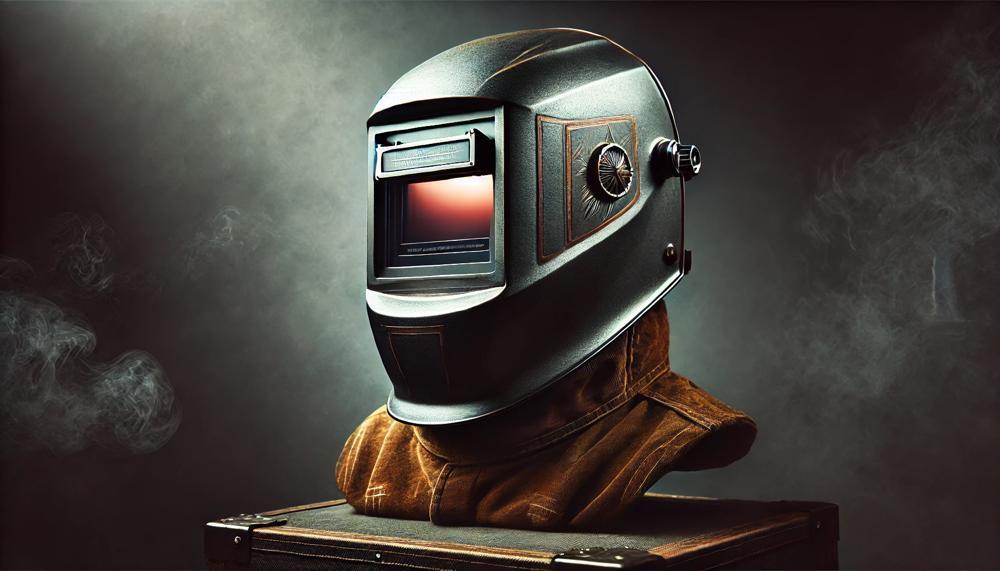
When it comes to safeguarding your peepers during a solar eclipse, the debate often falls between donning a welding helmet versus eclipse glasses.
Both have their merits, but it’s crucial to know the specifics to ensure you’re not risking your sight.
<
Comparison Table
| Feature | Welding Helmet | Eclipse Glasses |
|---|---|---|
| Protection Level | Must be Shade 12+ for adequate protection | ISO 12312-2 certified for solar viewing |
| Designed For | Blocking UV and IR radiation in welding | Specifically made for viewing solar eclipses |
| Usability | Not recommended for prolonged use during eclipse viewing | Designed for safe, direct viewing of the eclipse |
| Visibility and Clarity | Varies, not optimized for eclipse viewing | High clarity specifically for solar events |
| Safety and Standards | Not all are suitable for solar viewing | Meet international safety standards for solar viewing |
Welding Helmet Insights
Welding helmets, though built to shield against the fierce glare of welding, must adhere to certain conditions to be eclipse-worthy.
The shade level, a pivotal factor, should not dip below 1However, despite this precaution, welding helmets aren’t the ideal pick for star-gazers wanting to feast their eyes on solar spectacles.
They’re fashioned to fend off UV and IR radiation, not to offer a clear, crisp view of celestial wonders.
Eclipse Glasses Advantages
Eclipse glasses, on the flip side, are the champions of solar viewing. Crafted with solar safety in mind, they boast ISO 12312-2 certification, ensuring they block the lion’s share of the sun’s harmful rays.
Unlike the varied visibility through welding helmets, these glasses promise pristine clarity and are comfy to wear for the eclipse’s duration. Their sole purpose is to make solar events accessible without compromising on safety.
Conclusion
Traditional welding hats protect welders’ eyes from strong light and radiation. Now, solar eclipse fans have an interesting option. The important thing is that they can stop dangerous ultraviolet (UV) rays and lower the amount of light that gets through to safe levels, as long as they are the right shade level—14 or higher. Yet, the path from workshop to observing the stars isn’t completely smooth. Even though these hats are safe, they weren’t made for the different colors of light that happen during an eclipse. This difference shows how important it is to pick a helmet that fits well and meets strict safety standards instead of just any helmet.
No one wants to watch the dance of the stars during a solar eclipse through a damaged lens. Herein comes the sense of thinking about other options, such as solar screens or eclipse glasses, which are made specifically for looking at the stars. Not only do they promise safety, but they also promise clarity, which will turn the watching into a vivid observation. When the moon’s shadow falls on Earth, it’s very important to have the right tools for watching.
When it comes to seeing these rare pairings of the stars, knowledge is just as important as the tool you use. In some situations, a welding helmet can be used as a homemade doorway to the universe. However, using tools made just for observing the sun is the only way to make sure that the amazing moment of an eclipse is recorded clearly, safely, and accurately.
